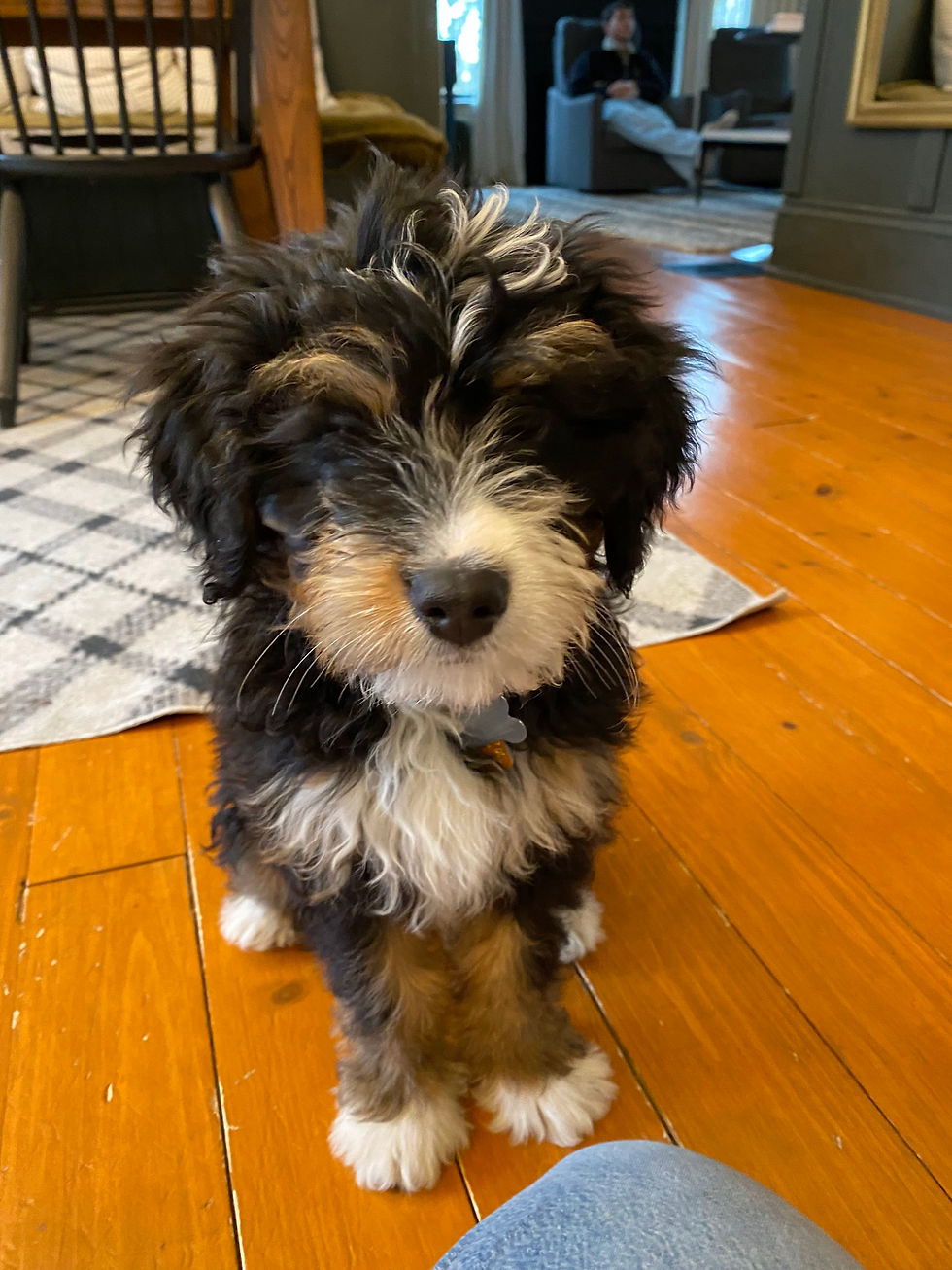Our First Full Day Together
- woodbriaramds
- May 13
- 4 min read
The First Full Day – Starting the Journey
The morning might have been a blur of excitement, nervous tail wags, and tentative steps—but now the reality is setting in, for both of you. The first full day in a new home is where the adjustment truly begins. Your puppy is starting to absorb the sights, smells, routines, and most importantly—you.
Keep the Day Calm and Predictable
Today’s goal isn’t stimulation—it’s safety and structure. Your puppy needs time to process everything. That means keeping the environment calm, quiet, and predictable. Resist the urge to introduce too many new people or let your pup explore the whole house. Instead:
Stick to one or two rooms where your puppy can feel secure.
Keep your voice gentle and soothing.
Give your pup time to explore at their own pace.
You’re not boring them—you’re helping them feel safe.
Start Creating a Routine
Dogs thrive on routine, and it’s never too early to begin. Try to establish a consistent flow to the day, building on what you started this morning. A predictable rhythm during these first few days and weeks will make the transition smoother for both of you.
It’s said that puppies sleep 18–20 hours a day, but honestly, that can be a bit presumptive. If you can plan for your puppy to rest in their playpen area for about two to three hours for every one to two hours of awake time, you’re doing great! And if they sleep more than that—that’s a win-win for both of you.
One of the most important things you can do is maintain a calm demeanor. Puppies are incredibly sensitive to your energy. If you’re stressed, they’ll feel it. I know—it’s easier said than done! But just reminding yourself to stay calm during frustrating moments will go a long way toward helping your puppy feel calm and secure.
Positive Crate Association for the Win!
Crate training starts today—and it should be all about positive association. Think of the crate as your puppy’s personal bedroom: safe, quiet, and comfortable.
Start simple:
Keep the crate door open and toss a treat inside.
Let your puppy enter at their own pace. If they’re hesitant, place the treat near the entrance and gradually move it farther in.
As your puppy becomes more confident, you can close the door briefly and open it again right away. Don’t force it—if they’re unsure, just let today be about comfort.
There are some great training videos on YouTube that walk you through this process. I highly recommend Baxter & Bella and McCann Dog Training—both offer trustworthy, step-by-step guidance.
Focus on Trust, Not Training
It’s tempting to jump right into training commands like "sit" or "stay," but the most important lesson your puppy needs to learn today is this: you are safe.
At Woodbriar Wags, we teach a basic “sit to say please,” which is a great way to start shaping polite behavior from day one. We don’t say the word “sit” at first—we just wait for the puppy to sit naturally and then mark it with a “yes!” and give a treat. It’s simple and powerful, and it sets the tone for all future training.
Want to see it in action? Check out our YouTube channel at Woodbriar Wags—you’ll see puppies as young as 6–10 weeks mastering this behavior with confidence.
A few ways to build trust and connection today:
Sit on the floor and let your pup come to you.
Pet them gently when they’re calm—not when they’re overstimulated.
Use a soft, positive tone when saying their name.
Reward curiosity, but avoid overwhelming them with new experiences too quickly.
Monitor Potty Breaks Closely
Today is an ideal time to reinforce good potty habits. Use the crate as a tool to monitor potty needs, and try the following routine:
Take your pup out every 30–60 minutes.
If they don’t go within a few minutes, bring them back inside and put them in the crate for 15–30 minutes. Then try again.
Once they go successfully outside, they earn some “free time” to play—always under supervision.
Keeping a potty journal can help you spot patterns and avoid accidents. Remember: your pup will need to go after eating, drinking, waking from a nap, or playing.
Always praise and reward immediately after they go in the right spot—it’s the start of a habit that will save you a lot of frustration later on.
End the Day Gently
As the evening winds down, begin introducing a bedtime routine. This might include:
A final potty break
Dim lights and quiet time
Some gentle cuddles
A calm moment in the crate
This second full night might still be a little rocky—but by establishing a routine, you’re teaching your puppy when it’s time to wind down. You’re also helping them feel safe, secure, and loved.
Final Thoughts for Day One
Today is all about laying the emotional foundation your puppy will carry for the rest of their life. Every calm moment, every reassuring word, every gentle “good puppy” teaches them:
You belong here. You’re home.



Comments